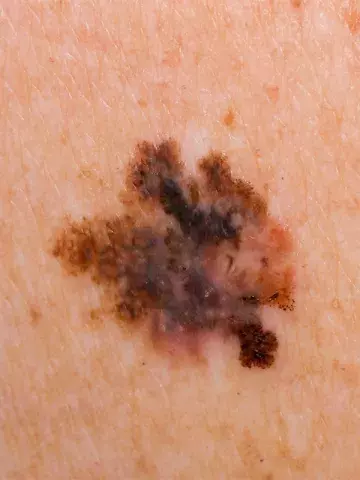Most participants unable to self-detect malignant melanoma, finds Australian study
By Dr Emily Lathlean MB BS, FRACGP
Only one in five participants found to have a malignant melanoma (MM) were aware of the lesion of concern, according to a recent Australian study.
A multisite, cross-sectional study, published in PeerJ, began with a survey of all participants. Participants were asked about skin cancer risk factors and whether they had any lesions they were concerned about. A skin cancer doctor then performed a whole-body skin cancer screen. All suspicious lesions thought to be a melanoma were photographed by a digital dermatoscopic system, which automatically generated a predicted artificial intelligence score for MM.
A total of 260 participants were identified to have a possible melanoma lesion, of which 83 (32%) were determined to be a MM via histopathology. The melanomas were primarily located on the back (34.9%), lower leg (13.3%), arms (10.8%), chest (9.6.%) and upper leg (7.2%); 2.4% of the melanomas were located on the ear. Five participants had two MMs detected.
Of the 83 participants with confirmed cases of MM, only 18 (22%) had recognised they had a lesion of concern. The MMs self-recognised by participants were primarily found on the back (44%), shoulder (11%) or upper leg (11%).
The researchers highlighted the paucity of information available to the general public about how to recognise a MM, suggesting it may be unreasonable to expect Australians to self-detect melanomas.
A review of current skin cancer screenings practices, with a greater emphasis on routine screening and skin cancer checks in asymptomatic individuals, as well as contemporary skin cancer campaigns promoting self diagnosis, were among recommendations made by the researchers. However, it was acknowledged that skin cancer screening examinations were not endorsed in current Australian guidelines for asymptomatic low-risk individuals given the lack of evidence that low-risk screening reduced mortality.
‘This is an interesting article concerning a topic that is current and somewhat controversial,’ said Professor Stephen Shumack, Consultant Dermatologist at Sydney’s Royal North Shore Hospital and Clinical Associate Professor in Dermatology at Sydney Medical School, The University of Sydney.
‘As the authors correctly state, there is no evidence that population-based skin screening has an effect on mortality. This is the reason that population-based screening is not recommended in Australia and worldwide.’
Professor Shumack identified several limitations of the study, including its relatively small size, its selectiveness (in that the patients were concerned enough about their skin to either self-present to the skin clinics or to be referred by their usual GP), and that most melanomas identified were in situ, making it difficult to correlate the findings with mortality outcomes.
The researchers highlighted the benefits of detecting MM while still in situ, given invasive MMs are more difficult to treat and associated with poorer patient outcomes and higher costs, and advocated for increased support for GPs in the early detection of MMs.
Professor Shumack agreed that the importance of population and GP education about early detection of MMs was undisputed. However, he explained that a much larger multicentre study looking at invasive MMs needed to be undertaken before any modifications should be made to current skin cancer screening guidelines.


